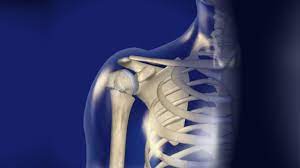Among the longest bones in the body, the humerus is located in the upper arm, which makes it susceptible to fractures when struck by something impacting it.
The upper arm is found between the shoulder joint and elbow joint. It contains three muscles in the anterior compartment (biceps brachii, brachialis, coracobrachialis) and one in the posterior compartment (triceps brachii).
Understanding Your Humerus
The humerus is defined as the upper arm’s long bone, and it runs from your shoulder to your elbow, where it connects with your forearm’s ulna and radius bones. Any fracture in the humerus is considered a humerus fracture.
Depending on where the break is positioned, a humerus fracture can bring discomfort in your shoulder or elbow, and recovery can take several weeks.
It is a structurally important bone that acts as an insertion site for several vital muscles. Rotation of the head of the humerus is assisted by the pectoralis major (“pecs”) and latissimus dorsi (“lats”). The humerus connects to a lot more muscles that move the arm and upper body.
These include:
- Deltoids
- Brachioradialis
- Coracobrachialis
- Pronator teres
- Teres major
- Brachialis
- Common flexor and extensor tendons.
It is also important to note that the rotator cuff muscles in the shoulder stabilize the glenohumeral joint, an unstable articulation prone to dislocation and rotator cuff injuries. In the elderly, rotator cuff injuries are more likely to occur.
Causes of Fractures
Here are some of the generally reported causes of shoulder fractures:
- Falling from great heights, such as while riding a horse or climbing a rock face.
- Football, for example, is a highly physical sport.
- Stressful incidents, such as car accidents, are also common.
- Loss of bone mass caused by osteoporosis can increase the risk of shoulder fractures.
Types of Shoulder Fractures
Based on the fracture site, humerus fractures are classified into three categories.
1- Fractures of the Proximal Humerus
Fractures of the proximal humerus occur around the shoulder joint. The ball of the humerus bone is in the socket of the shoulder joint, which is a ball-and-socket joint. Proximal humerus fractures are those that arise near the ball. The insertion of the essential rotator cuff tendons is possibly involved in these fractures. Because these tendons are so critical to shoulder mobility, the location of their insertions may influence therapy.
2- Humerus Fractures in the Mid-Shaft
Fractures of the midshaft of the humerus are on the bone away from the shoulder and elbow joints. Most humeral shaft fractures heal without surgery, although there are few cases when surgery is required. These injuries are frequently linked to damage to the radial nerve, one of the arm’s largest nerves. If this nerve is injured, it might cause symptoms in the wrist and hand.
3- Distal Humerus Fractures
Near the elbow joint, distal humerus cracks develop. These fractures almost often need surgical treatment unless the bones are correctly placed. Children are more at risk of getting this sort of fracture, although the therapy is considerably different in this age range.
Symptoms of a Humerus Fracture
There are a variety of symptoms depending on the type of fracture.
- Pain
- Inability to move the shoulder
- Swelling and bruising
- The shoulder feels grinding when it is moved
- Loss of function if a nerve injury takes place
- Deformity — “It does not look right.”
- Occasionally bleeding (open fracture)
Treating a Humerus Fracture
Treatment is decided on the location of the broken bone and the severity of the break. The bone is repositioned if necessary, and it can be conducted surgically or non-surgically.
The surgeon may use pins, plates, or screws to keep the bone together if surgery is required. After that, you’ll need to wear a sling, splint, or cast to keep the bone in place and protect it from further harm while it heals.
Other therapies may be employed to help with symptom relief or regaining function.
- Cold packs are one of them. Applying an ice pack to the injured area may aid in the reduction of swelling and discomfort.
- Pain relievers. Using over-the-counter or prescription pain relievers can help in minimizing pain and swelling.
- Exercises. Particular exercises at home or with a physical therapist can help improve strength, flexibility, and range of motion in the shoulder, arm, or elbow.
Conclusion
We identify humerus as the long bone in our upper arm. Humerus fractures are typically treated with medications, immobilization, and physical therapy. If the condition is more severe, surgery may be required.
Consult the best orthopedic doctor in Multan through Marham.pk if you experience severe, unexplained upper arm pain or if it interferes with your range of motion.
Frequently Asked Questions (FAQs)
1- How should I sleep with fractured humerus?
It would help if you slept sitting up in an armchair or propped up in bed with plenty of pillows. Allowing your upper arm to hang is preferable to resting it on cushions, which may press your shoulder upwards.
2- What is the healing time of a broken humerus?
The majority of proximal humerus fractures do not requires surgery. It will take 3 to 4 months for the fractured bone to recover. You’ll need to do exercises to restore range of motion strength and return to typical activities during this period.
3- Is it possible to break a bone in your upper arm?
Upper arm fractures occur at the upper arm bone’s upper end (humerus), affecting the shoulder joint. Most upper arm fractures result from falling on an outstretched arm. Usually, the broken pieces of bone remain in place or close together and thus tend to heal independently.
